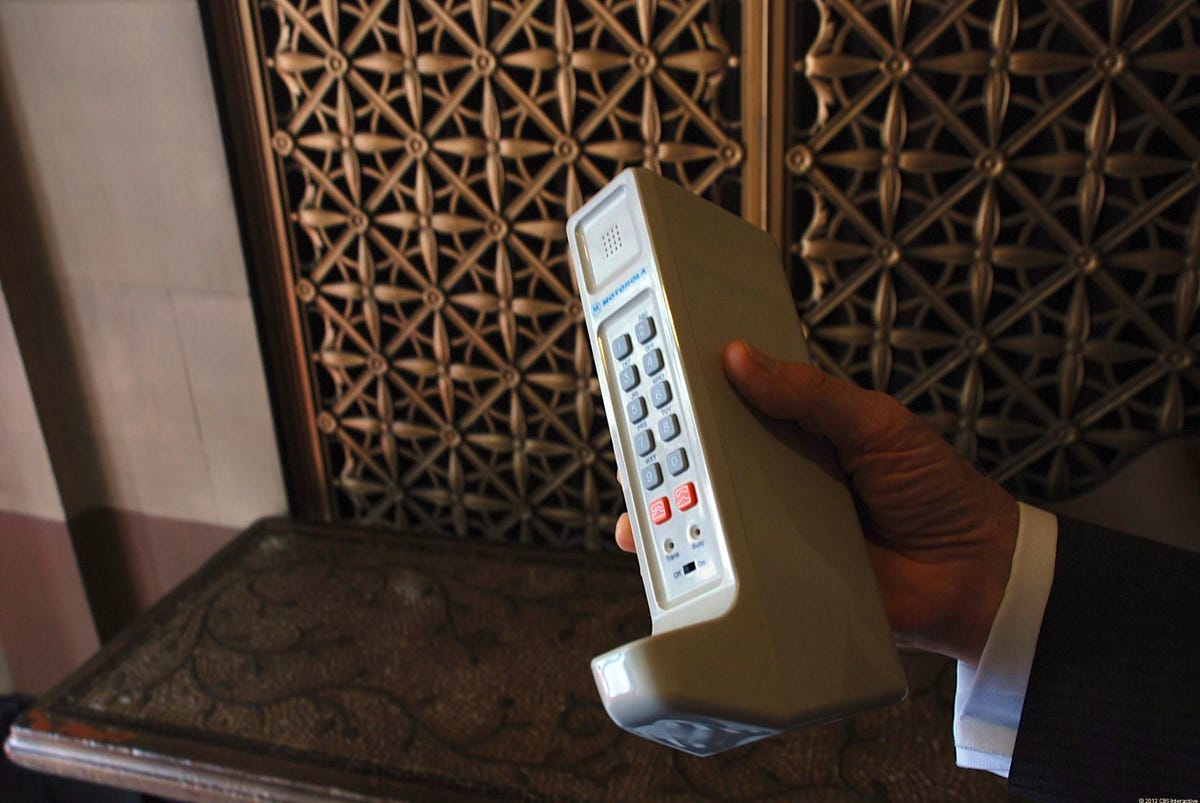commentary At Motorola’s “On Display” press event in New York City last week, most eyes centered on the company’s new Razr phones. Yet, there were also a couple of tech celebrities in the audience, both of whom drew their own share of attention.
A man One of those luminaries was a person, a former Motorola vice president and division manager named Martin Cooper. Seated in the front row, but not banging away on a laptop, you knew he wasn’t part of the journalist and blogger throng. Instead, with his dark suit, conservative red tie, and French cuffs, he looked more like a Wall Street analyst about to write a report on Moto’s earnings.
When introduced, he stood and waved to the audience, his broad smile beaming through a carefully cropped white mustache and beard. And in the biggest surprise of all, the bloggers actually stopped for a moment, looked up, and offered much more respect than they did for the band that had tried to engage them in a singalong a few minutes earlier.
Related stories
- CNET’s full review of the Motorola Droid Razr M
- Motorola gets new direction, lease on life under Google
- Motorola announces three new Droid Razrs for Verizon
- Motorola promises Jelly Bean-less Android buyers $100 credit
He wasn’t holding a new Razr M or Razr Maxx HD in his hand, but it was entirely appropriate that Moto brought its former employee to the Herald Square venue for the big show. For it was almost 40 years years ago, on April 3, 1973, that Cooper made the first public cell phone call from a spot just 18 blocks up Sixth Avenue. His audience at the time was small, but mobile history was undoubtedly made.
Though Cooper, now 83, wasn’t the only person who played a role in making the cell phone as we know it, he was a prime force. His chief rival was Joel S. Engel, head of research at AT&T’s Bell Labs and the recipient of Cooper’s first call (I guess he wanted to rub in his win). Bell Labs developed technology to create the car phone, but Cooper thought of taking the mobile phone out of your car and putting it in your pocket.


The Dynatac: Hello? It’s 1973 calling.
Kent German/CNET
And a machine The trouble was, of course, that the first commercially available cell phone wouldn’t fit in your average purse, let alone a pocket. That would have been Dynatac 8000x, the first commercially available cell phone (so not a car phone). Not only did Cooper’s team develop it, but also he used the prototype to make his first call.
Think of Gordon Gekko’s phone and you’ll get the basic idea. The “brick phone” weighed 2.5 pounds, and measured about 11 inches high, 1.5 inches wide, and 4 inches deep. It had a real antenna (those actually lasted a long time), a tiny display, and a simple power switch. The only controls where the numeric keys and the Talk and End controls.
After Motorola lobbied the Feds to allocate spectrum for private cellular use, the FCC approved the Dynatac in 1983. When it went on sale in 1984, the Dynatac cost $3,995, or about $9,189 in today’s dollars. The monthly service fee was $50, so about what you might pay today for a basic plan, but voice calls cost 40 cents a minute at peak hours and 24 cents a minute at off-peak times. Talk time battery life was just 20 minutes, and, no, the Dynatac didn’t do anything else.
That brings me to the other star of the event, an early Dynatac model. Cooper was happy to show it when I asked. In fact, I got the impression that it’s his favorite party trick. Though it lacked the antenna and display of the commercial models, it clearly showed how far we’ve come from the Midtown street corner in 1973. The phone was beyond bulky, but it also reminded me that not matter how much you cram in a phone, in the end it’s really about making calls.
Cooper shared almost the same sentiment as he was walking out the door. We talked for only a few minutes, but the phone reviewer in me had to ask what he thought of the day’s events. “You can talk all you want about how these things are mobile computers. But the only thing that matters is the user experience,” he said while shaking the Dynatac in his hand. “That should always be the goal.”
Wise words, indeed.



